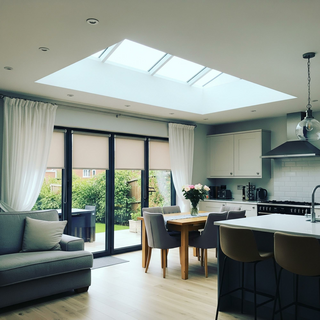
Your home’s plumbing system does a lot of heavy lifting behind the scenes—delivering clean water, removing waste, and keeping your daily routines running smoothly. Much like fire safety or electrical maintenance, keeping your plumbing in top shape is essential for your comfort, safety, and peace of mind.
Unfortunately, it’s easy to fall into the trap of overlooking small plumbing problems. That tiny drip or slow drain may not seem urgent now, but left unchecked, these issues can turn into much bigger (and more expensive) headaches. Water damage, structural concerns, and even health risks can result from ignoring early warning signs.
That’s why recognising these signs early—and knowing when to act—can save you stress, time, and money. Below, we’ve outlined the five most common indicators your plumbing system needs attention, along with practical tips to help you stay ahead of trouble.
1. Dripping Faucets and Persistent Leaks
A dripping tap may seem harmless, but it can quietly drive up your water bill and waste thousands of litres of water over time. A single tap dripping once per second can waste over 11,000 litres a year. That’s not just costly—it’s also environmentally unsustainable.
In most cases, dripping faucets are caused by worn-out washers or internal components. These are common issues, but they shouldn’t be ignored. Over time, even a small leak can damage fixtures and contribute to mould growth or rot.
Quick tip: While waiting for a professional, you can reduce water waste by turning off the water supply to the affected tap or catching the drips in a bucket. But these are only stopgaps. Knowing when to call a plumber ensures the leak gets adequately fixed before it turns into something worse.
2. Slow or Clogged Drains
If water is taking forever to drain — or not draining at all — you’re likely dealing with a clog. Common culprits include hair, soap residue, cooking grease, and food particles. Left unchecked, clogs can lead to pipe damage or even sewage backups.
A slow drain isn’t just inconvenient; it can signal deeper issues, like tree root intrusion or pipe corrosion.

DIY first aid: Try using a plunger or a baking soda and vinegar mix for light clogs. Avoid chemical drain cleaners as they can damage your pipes over time. And if the issue keeps coming back, that’s a clear sign it’s time to bring in a plumber.
3. Weak Water Pressure
If your once-powerful shower now feels more like a trickle, weak water pressure could be the culprit. Low water pressure can be frustrating, especially when you’re trying to shower or rinse dishes. It’s often caused by a buildup of mineral deposits, small leaks, or a failing pressure regulator. In some cases, it may even stem from problems with your local water supply.
In hard water areas, mineral scale can accumulate inside pipes and fixtures, narrowing the flow and reducing water pressure over time. Corrosion in aging plumbing can also play a role. If only one fixture has low pressure, the issue might be isolated. But if the whole house is affected, there could be a more significant plumbing issue behind it.
What you can try: Clean out your aerators and showerheads, especially if you have hard water. But if that doesn’t solve the problem, it’s best to have a plumber inspect your system. They’ll check for hidden leaks, blockages, or pipe corrosion.
4. Unpleasant Odours from Drains
Foul smells coming from your sink or shower drain can make your home feel less than fresh, and could be a warning sign of bigger issues. Clogs, dry traps, or sewer gas leaks might be to blame. In some cases, the smell may indicate a damaged seal or venting problem.
Short-term solution: A quick flush with hot water or a baking soda and vinegar solution can fix the issue. But if the smell lingers or worsens, it’s important to act. Foul odours might point to a broken seal under your toilet, a malfunctioning vent, or a developing issue with your septic system.
Persistent smells not only affect your home’s air quality but could pose health risks too. If the source of the smell isn’t obvious or your DIY efforts aren’t solving the problem, it’s time to reach out to a professional plumber for a thorough inspection.
5. Unusual Noises in Pipes
Do your pipes bang, whistle, or rattle when you turn on the tap? These sounds, often referred to as “water hammer” or air in the lines, are your plumbing system’s way of crying out for help.
These noises might indicate issues like high water pressure, loose pipe fittings, or faulty valves. While they might seem harmless, they can strain your pipes and, over time, lead to leaks or pipe bursts.
What you can do: Check if the noises are coming from a specific area. Securing loose pipes or adjusting water pressure can sometimes fix the issue, but ongoing or worsening noises should be looked at by a licensed plumber to prevent damage.
Your Next Steps: Stay Ahead of Plumbing Problems
Plumbing issues don’t get better on their own—if anything, they tend to grow more complex and costly the longer they’re left unchecked. That’s why paying attention to minor signs, like dripping taps, sluggish drains, low water pressure, unpleasant smells, or strange pipe noises, can make all the difference.
While some minor problems can be handled with a bit of DIY, it’s equally important to recognise when to call a plumber. Professional plumbers have the tools, experience, and training to diagnose and repair plumbing issues before they escalate.
By taking a proactive approach, you’re not just preventing inconvenience—you’re protecting your home’s structure, comfort, and value. A small investment in routine maintenance and early detection can help you avoid costly emergencies and enjoy peace of mind, knowing your plumbing system is working exactly as it should.
After all, your home should be a place of comfort, not surprise water damage or last-minute repair bills. Stay informed, act early, and don’t hesitate to reach out to the experts when needed. Your plumbing (and your wallet) will thank you.
Ref: 4186.36670_3-3




 POSTED BY
POSTED BY 

